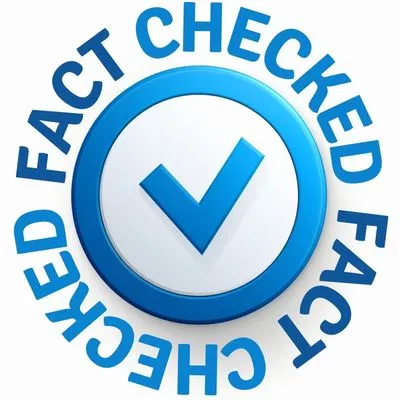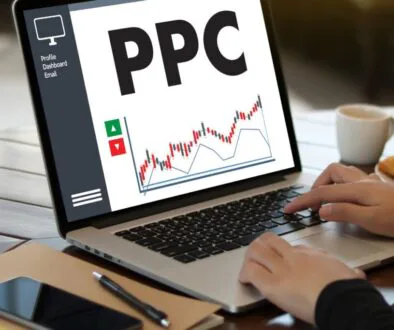How To Decode Misleading Statistics In Advertising Campaigns

Published February 10, 2025
Statistics are key to effective advertising. They add credibility, guide decisions, and simplify ideas. But what happens when numbers are misused? Data manipulation is common. Companies often twist stats to make their products look better. For consumers, this leads to poor buying decisions. For marketers, it risks legal troubles and reputational damage.
Understanding these tactics is key. It helps consumers make informed choices, and marketers uphold ethics. In this article, we’ll explore misleading statistics in advertising, real examples, and tips to spot them.
The Influence Of Statistics On Advertising
Statistics hold immense power in marketing, shaping perceptions and driving decisions. Numbers resonate with consumers because they represent objectivity and precision. A claim like “clinically proven” or “trusted by 90% of users” is far more persuasive than a simple endorsement.
Industries such as beauty, weight loss, and food and beverage frequently leverage the allure of statistics. For example, a skincare brand stated, “85% of users noticed fewer wrinkles.” Such claims grab attention instantly. They appeal to our logic, encouraging quicker decisions.
Yet, this trust in numbers can leave consumers vulnerable to deception. Was that “85%” from a reliable, unbiased study? Or was it cherry-picked to fit a narrative? This gap between truth and presentation is where misleading statistics in advertising often take root.

Common Techniques For Manipulating Statistics
Statistics, though not inherently misleading, can be manipulated through specific tactics:
Cherry-Picking Data
Cherry-picking means using only data that supports a claim while ignoring contradictory evidence. For example, a company might highlight positive reviews but hide negative ones. This gives a false impression, making consumers think a product is widely loved even if many are unhappy.
Misleading Sample Sizes
Claims like “9 out of 10 users recommend this product” can be misleading, mainly if they’re based on just 10 participants.
Misrepresentation often comes from small or unrepresentative samples, distorting the truth. This problem also applies to surveys, where feedback from only 20 people may not reflect the broader population.
Ambiguous Or Vague Terms
Terms like “clinically proven” or “natural ingredients” may sound reassuring. However, they often lack clear definitions and little evidence to back them up. This can mislead consumers and create a distorted perception of a product’s effectiveness.
Manipulating Graphs And Visuals
Graphs can be easily manipulated. Distorted scales or missing data points can exaggerate a product’s benefits. Widening the gap between data points can make differences look bigger than they are.
Bias In Surveys
Survey questions can sometimes be worded to bias results by encouraging specific answers. For instance, asking, “Did you find our product effective?” assumes effectiveness and pushes respondents toward a positive answer. This suppresses feedback and distorts opinions, leading to skewed data that impacts decisions. To ensure accurate results, surveys should be neutral and avoid leading language.
Misleading Averages And Percentages
Statistical averages can easily be manipulated to create a false impression. For example, an “average savings of $500” claim can be misleading. It might be based on a few outliers with very high savings. This doesn’t reflect the typical experience of most consumers.
“Us Vs. Them” Comparisons
Brands compare themselves to competitors to show their strengths. These comparisons are often biased. They showcase their advantages while ignoring their flaws or their rivals’ strengths. This can mislead consumers and create an unfair perception of superiority.
Sneaky Percentages
Percentages like “80% improvement” can sound impressive. But without sample size or methodology details, they mean nothing. Was the sample large enough? What criteria measured improvement? Without transparency, such claims can mislead or exaggerate. Always dig deeper to understand the context.
Made-Up Numbers
Some advertisers create fake statistics to make their products or services look better. They rely on consumers not checking the facts. These false claims mislead buyers and create false trust in the brand.
Real-World Misleading Statistics Examples In Advertising
These examples illustrate how deceptive practices unravel under closer examination:
- Sephora’s “Clean Beauty” Controversy. Sephora faced lawsuits over its “clean” beauty products. Consumers criticized the products for reportedly containing synthetic ingredients. The ambiguous terminology sparked significant backlash.
- Bang Energy’s “Super Creatine”. Bang promoted a fake compound targeting fitness enthusiasts. Competitors questioned its claims, leading to a $293 million lawsuit.
- Hey Dude Shoes Concealing Negative Reviews. Hey Dude Shoes suppressed critical feedback, creating a falsely positive image of customer satisfaction. Ultimately, this led to legal consequences.
- Activia’s Health Claims. Dannon exaggerated the health benefits of its yogurt, using misleading clinical terminology. This led to a class-action lawsuit and tarnished the brand’s reputation.
These examples show how misleading statistics in advertising can harm consumer trust and cause brands to suffer serious financial losses.
The Consequences Of Misleading Statistics On Trust
Manipulating statistics may offer short-term benefits. However, the long-term consequences often outweigh these gains.
When deceptive practices come to light, they can lead to:
- Erosion of consumer trust. Customers who feel misled will unlikely stay loyal or recommend your brand to others.
- Legal and financial penalties. Misleading claims can result in costly lawsuits and substantial fines.
- Irreparable reputational harm. Negative publicity can permanently damage a brand’s image, making recovery difficult, if not impossible.
- Widespread skepticism of advertising. These practices undermine trust in the brand at fault and across the entire marketing industry.
The cost of deception is steep. Honesty remains the foundation of lasting trust and success.
How To Spot And Avoid Misleading Statistics In Advertising
You don’t have to fall victim to deceptive advertising. Here’s how to spot and steer clear of misleading claims:
- Evaluate critically. Be skeptical of claims that seem too good to be true. Healthy doubt is your best defense. Focus on visuals and graphics. Look for exaggerated scales. Watch for missing information that could mislead. Be cautious of vague phrases like “clinically proven,” and take the time to dig deeper for credible sources or proper documentation.
- Verify information. Check reviews on trusted platforms like Consumer Reports or Wirecutter. Look for approvals from reputable bodies like the Federal Trade Commission (FTC) or the Food and Drug Administration (FDA).
- Recognize unrealistic promises. Watch out for over-the-top claims like “lose 30 pounds in 3 weeks!” A quick online search can reveal if similar promises have been linked to lawsuits or warnings.

Ethical Advertising Practices Every Marketer Should Follow
As marketers, we must foster trust and transparency. Embracing ethical principles isn’t just the right thing to do. It’s also a savvy business strategy.
Here’s how to ensure your advertising practices are both honest and compelling:
- Be transparent about data. To maintain credibility, always provide context for statistics, including sample sizes and methodologies.
- Stick to the truth. Avoid exaggerated claims and highlight what your product can genuinely deliver.
- Cite reliable sources. Support your data with evidence from credible research or studies.
- Prioritize long-term trust. Building trust fosters sustainable growth, even if it means sacrificing short-term wins.
Authenticity builds trust. Integrity strengthens relationships. Together, they create meaningful connections and lasting success.
Regulatory Framework And Consumer Advocacy
Tackling deceptive advertising needs joint action. Regulatory authorities and consumer advocacy groups must work together.
- Federal Trade Commission (FTC). Enforces laws against misleading advertisements in the U.S., ensuring accountability.
- The Advertising Standards Authority (ASA). Regulates advertising across UK media and promotes fair and transparent marketing practices.
- Consumer Advocacy Organizations. Groups like Public Citizen, Better Business Bureau (BBB), and the Consumer Federation of America (CFA) advocate for consumers. They provide guidance and support to those who feel misled.
Consumers can report fraudulent claims directly to the FTC via platforms like ReportFraud.ftc.gov. Independent review sites like Yelp and Good Housekeeping provide unbiased evaluations, helping consumers make informed decisions.
Frequently Asked Questions
What are the common techniques advertisers use to manipulate statistics?
Advertisers use tactics to sway consumers. They cherry-pick data, rely on small or biased samples, and make vague or misleading claims.
How can I spot misleading statistics in ads?
To spot questionable claims, check the context, review the sample size, assess the transparency of the methodology, and cross-check the information with independent, reliable sources for a clearer picture.
Why are ambiguous terms problematic?
Terms like “natural ingredients” are often vague, making brands seem credible without making clear or measurable promises.
How do misleading claims impact brands?
False claims can damage a brand’s reputation, lead to legal action or financial penalties, and erode consumer trust.

Truth In Numbers: Making Informed Advertising Choices
When used ethically, statistics are a powerful way to tell a product’s story. However, misleading statistics in advertising can foster deception and erode trust. For consumers, the key to avoiding manipulation lies in critically analyzing claims. Marketers are responsible for uploading ethical standards and building lasting credibility. The fight against misleading statistics in advertising begins with awareness. Knowing deceptive tactics is key whether you’re a consumer or a marketer. It helps you see through the noise and make better choices.
Hire The Digital Marketing Experts
We take online businesses and turn them into online empires by employing smart digital marketing strategies. Our team of experts are trained in a myriad of marketing skill including SEO to help you rank higher in search results, and ad management to ensure your message gets seen by the people you want. Need a business website that attracts business? We also specialize in website design and online sales optimization to help your business grow like never before.

This Content Has Been Reviewed For Accuracy By Experts
Our internal team of experts has fact-checked this content. Learn more about the editorial standard for our website here.

About The Author
Hi, I’m Corinne Grace! As an experienced writer holding a bachelor’s degree from Riverside College, I excel in creating articles supported by thorough research. Specializing in a wide range of topics like marketing and law, I craft engaging stories that connect with my readers. I continuously work to refine my skills to adapt to the ever-changing digital world.



